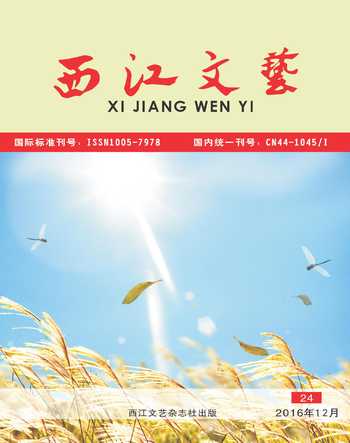An Analysis of Dialect from the Perspective of Stylistics
2016-05-30吴亚男
吴亚男
【Abstract】: Dialect is a very common phenomenon in our daily life. Usually, people from all kinds of districts use dialect to communicate everyday. A dialect is distinguished by its vocabulary, grammar, and pronunciation, and is categorized into many kinds, such as sociolect, ethnolect, regiolect, idiolect, genderlect and so on. In this thesis, the author will take genderlect as an example to simply analyze dialect from the perspective of stylistics. In the analysis, the author will use some typical instance of Japanese, because Japanese language can vary very much when use by different gender.
【Key Words】: dialect; genderlect; Japanese
Dialect is a variety of a language that is distinguished from other varieties of the same language by features of phonology, grammar, and vocabulary, and by its use by a group of speakers who are set off from others geographically or socially.
According to this definition, any variety of a given language constitutes “a dialect”, including any standard varieties. In this case, the distinction between the “standard language” or the “standard” dialect of a particular language, and the “nonstandard” dialects of the same language is often arbitrary and based on social, political, cultural, or historical considerations. In a similar way, the definition of the terms “language” and “dialect” may also overlap and are often subject to debate, with the differentiation between the two classifications often grounded in arbitrary and/or sociopolitical motives.
The more important usage refers to a variety of a language that is a characteristic of a particular group of the languages speakers. A dialect is distinguished by its vocabulary, grammar, and pronunciation. The term is applied most often to regional speech patterns, but a dialect may also be defined by other factors, such as social class, ethnicity, career and gender. A dialect that is associated with a particular social class can be termed a sociolect, a dialect that is associated with a particular ethnic group can be termed as ethnolect, a regional dialect may be termed a regiolect, and the particular speech patterns used by an individual are termed an idiolect, for example, we can easily recognize the different writing style of different famous writers. Other types of speech varieties include jargons, which are characterized by differences in vocabulary, slang and so on.
Ill take genderlect as an example to further explain my understanding of dialect. Namely, the spoken language between female and male can be distinguished by some points. Take Japanese for an example. When Japanese people say “delicious”, most male would say “うまい” while most female would say “おいしい”, when they say “lett go!”, most male would say “いくぞ” while most female would say “いくよ”, and when they say “fuck! Im really bad at it!”, most male would say “おれ、ほんとへたくそ。” while most female would say “わたし、ほんとうににがてなんだ。”. We all know that in Japan, men called themselves “ぼく” or “おれ”, but women usually call themselves “わたし” or “あたし”, which is the most important signal for distinguishing men and women. Further more, “ぞ” and “わ” are also a representative genderlect respectively for male and female in Japan. If a girl says “うまい” or “ぞ”, she would be considered a little bit rude, meanwhile, if a boy says “おいしい” or “わ”, he would be considered somewhat girl-like. So, Japanese people pay attention to their genderlect very much. That is to say, generally speaking,we can easily recognize the gender between their language.
Dialect is very interesting and deserves to be explored more deeply.
